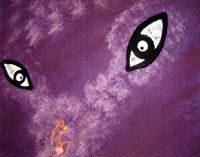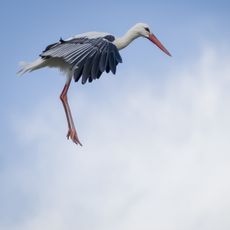Celebrating the fire pig
Charlotte Cory starts the Chinese New Year with a visit to one of the city of Bath's unsung treasures the Museum of East Asian Art


How better to celebrate the start of the Chinese Year of the Fire Pig than by visiting the new 'Welcome to China' exhibition at the Museum of East Asian Art in Bath? Housed in a handsome Georgian house close to the Royal Circus and near the Museum of Costume, this wonderful private collection of Oriental artefacts feels slightly incongruous until one considers how important tea and porcelain were to Jane Austen's England. All things Oriental were the very height of fashion.
Because of China's relative isolation throughout much of the 20th century, it is easy to forget how influential this powerful trading nation used to be. Now that shops are again full of goods from China, and also with Bejing about to host the 2008 Olympics, this concise, intelligent introduction to Chinese history and culture seems especially timely.
The exhibition occupies an elegant ground-floor room with cabinets displaying well-chosen objects, and incisive explanations covering such aspects as clothing (tiny slippers for bound feet sit beside a distinctive cap from the Mao era), living, travelling, eating and learning. If you think of China merely as the Great Wall or willow-pattern china landscapes (typical of the region south of the Yangtze River), pictures of other parts of this great continent of about 3.7 million square miles, spanning from Siberia to the Equator, demonstrate how varied the terrain actually is.
Important cultural differences are skilfully highlighted. For instance, in the West, copying works of art is regarded as faking, but in the East, artists pay tribute to their forebears by assiduously copying. This often makes Oriental artefacts hard to date to within even several centuries, a fact strongly borne out in the superb permanent collections upstairs.
The museum was founded in 1993 by Brian McElney, a lawyer who spent his working life in Hong Kong and devoted his spare time and money to collecting outstanding examples of all manner of objects, which he then housed and generously donated to a trust. Personally, if I owned the exquisite jade greyhound on the first floor, I would keep it permanently in my pocket. I have rarely seen a more beautiful collection of items so imaginatively displayed and interpreted. Nor, indeed, have I yearned more desperately to reach into the cabinets and touch them.
The jade and metalware galleries on the first floor are superb - I had no idea that jade is ever anything other than green but it is the ceramics on the second floor that startle. Yes, there is plenty of classic blue-and-white porcelain, but the extraordinarily modern-looking monochrome ceramics from the 17th century, whose colours and shapes have profound symbolism, are a revelation.
The museum also houses a fascinating reconstruction of a Chinese scholar's 'studio', but one of the most memorable objects is the 18th-century scholar's 'cheat sheet', the silk inner lining of a scholar's robe on which excerpts from Chinese texts that candidates for the Imperial civil service were meant to know by heart have been densely written.
Sign up for the Country Life Newsletter
Exquisite houses, the beauty of Nature, and how to get the most from your life, straight to your inbox.
When the English civil service was re-organised in the 19th century, the idea of entrance exams was copied from the Chinese. To this day, senior-ranking civil servants are sometimes called mandarins. One wonders how many of them ever resorted to such tactics.
There are plenty of educational activities for children, but it was a joy to find also, unusually, a range of inspiring things for adults. In the ceramics room, for instance, paper plates and crayons are supplied to draw one's own willow-pattern story. As I left the museum, a crowd of Mahjong enthusiasts were arriving for their weekly afternoon session.
Chinese visitors to the museum are often amused to find the game being played for fun rather than money.
'Welcome to China' is at the Museum of East Asian Art, 12, Bennett Street, Bath, until April 15 01225 464640; www.meaa.org.uk
Country Life is unlike any other magazine: the only glossy weekly on the newsstand and the only magazine that has been guest-edited by HRH The King not once, but twice. It is a celebration of modern rural life and all its diverse joys and pleasures — that was first published in Queen Victoria's Diamond Jubilee year. Our eclectic mixture of witty and informative content — from the most up-to-date property news and commentary and a coveted glimpse inside some of the UK's best houses and gardens, to gardening, the arts and interior design, written by experts in their field — still cannot be found in print or online, anywhere else.
-
 A well-connected rural playground with 23 acres on the edge of the South Downs National Park
A well-connected rural playground with 23 acres on the edge of the South Downs National ParkOld House Farm is an impressive family home with a wealth of amenities that would inspire any rural passion.
By Arabella Youens Published
-
 The UK gets its first ‘European stork village’ — and it's in West Sussex
The UK gets its first ‘European stork village’ — and it's in West SussexAlthough the mortality rate among white storks can be up to 90%, the future looks rosy for breeding pairs in southern England.
By Rosie Paterson Published
